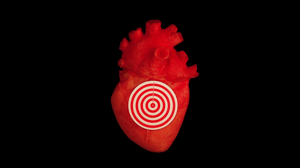This portable ultrasound scanner for the heart is the same size and as thin as a band-aid.
Researchers at the University of California have managed to miniaturise equipment that is normally used in clinics. Thanks to AI, the heart muscle can be ‘seen’ in any situation.
Bioengineers at the University of California have developed an extremely innovative device, that can be worn like a band-aid. It is about the size of a postage stamp and can provide an ECG of the heart continuously over a 24-hour period, including during intense physical activity. It then transmits the data to an AI system that processes it constantly, thus monitoring cardiac function.
The 'band -aid' provides a very realistic view of the heart structure: particularly useful information, because the heart muscle undergoes constant remodelling and, when in pain, it changes shape.
As the researchers underline in the scientific journal Nature, recording an ECG usually needs a clinic equipped with the right instruments and trained staff. This is not only expensive and requires patient travel, but it is also not optimal for imaging, because heart function is best seen when the heart is working, i.e., when the body is in motion. Wearing a portable ultrasound scanner is in itself a step towards more accurate diagnoses.
But that’s not all. This tool could be used for elderly people with heart problems, who could then be constantly monitored from home and receive therapy tailored to their heart condition.
This 'patch' could also be very useful for sportsmen and women, or anyone who, for various reasons, needs close monitoring of the heart muscle. All in a completely non-invasive way, and without the need for tests involving radiation, like CT scans.
Artificial intelligence that processes data and high-definition images
In terms of its technology, the new device continuously emits ultrasound and then processes high-definition images of the four heart chambers (two atria and two ventricles) from different angles. So, thanks to the artificial intelligence with which it is wirelessly connected, it processes data according to three parameters: systolic volume (the volume of blood, i.e., that the heart pumps with each beat), ejection fraction (the percentage of blood pumped by the left ventricle of the heart with each beat), and cardiac output (the volume of blood that the heart pumps every minute).
The AI system separately and automatically analyses the shape of the left ventricle, the most important for heart function, and, by calculating its volume frame by frame, it generates waves to measure systolic output, cardiac output and ejection fraction.
Also monitoring other organs
The researchers, who are working with a Californian company to produce a standardised patch on an industrial scale (if approval is granted by the FDA, the body that regulates the testing and sale of drugs and biomedical instruments in the United States), are also studying versions of the micro-ECG that can be applied to monitor other organs besides the heart.



